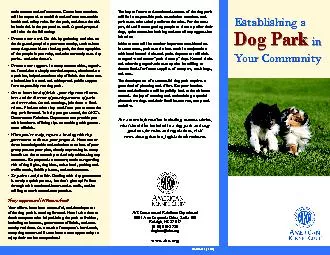PDF-Crate Training Your Dog Crate training your dog may take some time and effort but can
Author : faustina-dinatale | Published Date : 2015-03-12
If you have a new dog or puppy you can use the crate to limit his access to the house until he learns all the house rules such as what he can and cant chew and where
Presentation Embed Code
Download Presentation
Download Presentation The PPT/PDF document "Crate Training Your Dog Crate training y..." is the property of its rightful owner. Permission is granted to download and print the materials on this website for personal, non-commercial use only, and to display it on your personal computer provided you do not modify the materials and that you retain all copyright notices contained in the materials. By downloading content from our website, you accept the terms of this agreement.
Crate Training Your Dog Crate training your dog may take some time and effort but can: Transcript
Download Rules Of Document
"Crate Training Your Dog Crate training your dog may take some time and effort but can"The content belongs to its owner. You may download and print it for personal use, without modification, and keep all copyright notices. By downloading, you agree to these terms.
Related Documents














